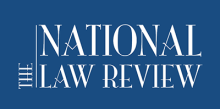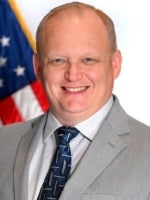This article examines the emergent legal strategy of challenging the authenticity of visual evidence by claiming it was generated or altered by artificial intelligence (AI). Building on the historical trajectory of digital photography's acceptance in courtrooms, it predicts a growing trend wherein defendants assert "AI fakery" as a form of reasonable doubt, even when logically implausible. The analysis draws upon precedents that guided the judicial reception of digital imagery, anticipating how similar legal tests may be adapted to confront the uncertainty that generative AI introduces. The rapid advancement of AI, as seen with the June 2025 release of Google's Veo 3, may create an environment of potentially conflicting judicial decisions as the technology continues to evolve.
Introduction
As generative artificial intelligence matures, it brings with it a crisis of confidence in the authenticity of digital media. Yan (2023) argues that, as part of the evolution of defense challenges, the legitimacy and reliability of evidence can be a catalyst for judicial review. This article argues that such claims, regardless of their merit, will become a strategic lever for sowing doubt in juries, much like early objections to digital photography. By reviewing judicial approaches to photo admissibility in the digital era, a reasonable prediction of convergence will reshape how courts handle visual evidence allegedly tainted by AI manipulation.
The Rise of Digital Photo Skepticism in the Courts
The skepticism surrounding visual evidence is not a new phenomenon. In the 1990s and early 2000s, courts struggled with whether digital photographs could be reliably authenticated, given the ease of digital image manipulation. Early opinions show judicial hesitation. In State v.
Swinton (2004), the Connecticut Supreme Court reviewed the use of computer-generated images in forensic comparison and emphasized the need for a strong foundational showing of accuracy and reliability. The court demanded rigorous expert testimony to validate the process through which the images were produced.
Similarly, in United States v. Habershaw (Cole et al., 2015), the court admitted a digital image but required the proponent to demonstrate the chain of custody and technical reliability. These cases reflect a period when the authenticity of digital images was contested not only by technical challenges but also by a latent judicial unfamiliarity with the medium.
Yet by the 2010s, courts routinely accepted digital photographs, assuming their reliability, absent specific claims of tampering. In United States v. Anderson (United States v. Anderson, 2010), the courts held that "{a} photograph may be authenticated based on the testimony of a witness familiar with the scene depicted and accuracy of the image, even if the photograph is digital." The focus has shifted from technological origin to contextual trustworthiness, a key pivot point that AI-generated evidence now threatens to undermine in reverse.
Generative AI and the Reemergence of Conscious Doubt
Deepfakes and other generative tools have placed us at another inflection point. Defense strategies are increasingly incorporating the question of whether a photo or video has been manipulated by AI, despite evidence to the contrary. Defense attorneys may begin to involve the specter of AI-generated forgeries to challenge the evidentiary integrity of images. Unlike prior challenges grounded in demonstrable technological limits, these objections are often rhetorical, leveraging juror unfamiliarity with AI to cast probabilistic doubt.
Jurors today may be particularly vulnerable to doubt when defense attorneys suggest that key evidence—especially images, audio, or video—could have been artificially generated using AI. Similar to the "CSI effect," which skews juror expectations by portraying forensic evidence as infallible on television, the "AI doubt effect" may cause jurors to overestimate the plausibility of fabrication. Even without technical proof, merely introducing the possibility that a piece of evidence could be deepfaked or algorithmically altered may erode trust in its authenticity. This tactic exploits both the novelty and perceived mystery of artificial intelligence, prompting jurors to question evidence that would otherwise seem conclusive. As AI continues to advance, the courtroom may see a shift from questioning the integrity of investigators to questioning the integrity of reality itself. The result could be a chilling effect on prosecutions that rely on digital evidence unless courts develop clearer standards for authenticating media in the era of AI.
The legal system has already signaled its discomfort with AI-manipulated media. In United States v. Thomas (USA V. Thomas, No. 22-60367 (5th Cir. 2023), 2023), prosecutors were compelled to preemptively authenticate surveillance footage amid claims that it might have been generated by artificial means. Though the court ultimately admitted the evidence, the mere presence of such an objection illustrates a strategic pivot: invoking AI is no longer about proving fakery but about invoking its plausibility to unseat credibility.
Predictive Analysis: The AI-Evidence Paradigm Will Follow the Digital Photography Trajectory
Much like early digital photo cases, courts will need to resolve three emerging doctrinal issues: (1) the standard for authenticating AI-susceptible evidence; (2) the threshold for allowing "AI manipulation" objections to proceed; and (3) the weight such arguments should carry in jury deliberation.
-
Authentication:
Under Federal Rule of Evidence 901 (a) (Rule 901. Authenticating or Identifying Evidence, n.d.), the evidence must be "sufficient to support a finding that the item is what the proponent claims it is." As a flexible standard, it has historically allowed for witness testimony or metadata. However, in the age of generative AI, this may no longer suffice. Courts may demand technical certification or expert validation-akin to the Swinton approach-especially if the defense invokes AI manipulation as a potential threat.
-
Objection Threshold:
Objections based solely on speculation that AI might have been involved, without affirmative evidence, risk clogging the judicial process. The court will likely adopt a gatekeeping function similar to that in Daubert v. Merrell Dow Pharmaceuticals, Inc., (Daubert V. Merrell Dow Pharmaceuticals, Inc., 509 U.S. 579 (1993), n.d.), requiring defense assertations to meet a preliminary showing of plausibility before triggering extensive evidentiary hearings.
-
Jury Perception and Prejudicial Impact:
As with early digital photography cases, there is a risk that jurors, influenced by media portrayals of AI's capabilities, will overestimate the ease of deepfake production. Courts must weigh the Rule 403 (Rule 403. Excluding Relevant Evidence for Prejudice, Confusion, Waste of Time, or Other Reasons, n.d.) danger of undue prejudice, as speculative claims of AI fakery may distort rational deliberation. Instructions clarifying the burden of proof and cautioning against technological speculation may become standard in trials involving digital imagery.
Preemptive Doctrinal Solutions
To prevent the erosion of evidentiary trust, courts, and legislatures must act proactively. The judicial system could establish a rebuttable presumption of authenticity for images with clear metadata, a chain of custody, and expert validation, placing the burden on the challenging party to offer more than mere conjecture.
Model jury instructions should evolve to include language addressing AI-related objections. For example: "The defense has raised a possibility that the image may have been altered by artificial intelligence. You may consider this claim only if you find credible evidence supporting it, not merely because such alteration is theoretically possible".
Legal scholars have begun to call for standardized AI forensic tools. Just as photo enhancement tools gained legitimacy through peer review and industry standards, AI authentication mechanisms, such as digital provenance frameworks like Adobe's Content Authenticity Initiative, may become part of the evidentiary protocol. A stall in this preemptive approach surrounds the inherent speed at which AI is advancing and able to avoid such authenticators.
Conclusion
The use of artificial intelligence to question the authenticity of visual evidence is not just a future concern; it is a present tactic, echoing the transitional anxiety that accompanies digital photography's courtroom debut. Courts must apply historical wisdom, refusing all speculative doubt to supplant procedural rigor. Just as the judiciary adapted to the digital lens, it must now refine its focus to discern the real from the fabricated in an era where the line between them has never been more ambiguous.
References
Cole, K.A., Gurugubelli, D., & Rogers, M.K. (2015, May 20). A review of recent case law related to digital forensics: Proceedings of the 2015 annual ADFSL Conference on Digital Forensics, Security and Law. Daytona Beach, FL.
https://commons.erau.edu/adfsl/2015/wednesday/2/
Daubert v. Merrell Dow Pharmaceuticals, Inc., 509 U.S. 579 (1993). (n.d.). Justia Law. https://supreme.justia.com/cases/federal/us/509/579/
Rule 403. excluding relevant evidence for prejudice, confusion, waste of time, or other reasons. (n.d.). LII / Legal Information Institute.
https://www.law.cornell.edu/rules/fre/rule_403
Rule 901. Authenticating or identifying evidence. (n.d.). LII / Legal Information Institute. https://www.law.cornell.edu/rules/fre/rule_901
State v. Swinton, 268 Conn. 781,847 A2d. 921 (2004).
https://caselaw.findlaw.com/court/ct-supreme-court/1407681.html
Yan, Q. (2023). Legal Challenges of Artificial Intelligence in the Field of Criminal Defense. Lecture Notes in Education Psychology and Public Media, 30(1), 167–175. https://doi.org/10.54254/2753-7048/30/20231629
USA v. Thomas, No. 22-60367 (5th Cir. 2023). (2023, January 6). Justia Law. https://law.justia.com/cases/federal/appellate-courts/ca5/22-60367/22-60367-2023- 01-06.html
United States v Anderson, No. 09.1733,618 F.3d 873 (8th Cir. 2010) https://caselaw.findlaw.com/court/us-8th-circuit/1536307.html




 />i
/>i

